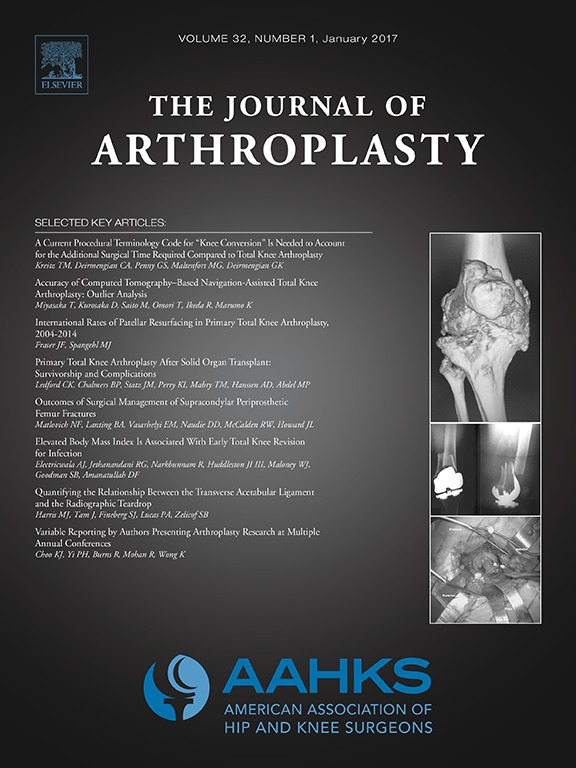
Migration & Clinical Outcomes with Triple-Taper Blade vs. Quadrangular-Taper Femoral Stem in THA

Migration & Clinical Outcomes with Triple-Taper Blade vs. Quadrangular-Taper Femoral Stem in THA
2-Year Radiostereometric Analysis Evaluation of a Short, Proximally Coated, Triple-Taper Blade Femoral Stem Versus a Quadrangular-Taper Stem With Reinforced Proximal Body: A Randomized Controlled Trial.
J Arthroplasty. 2023 Jul;38(7S):S152-S161.Synopsis
Sixty patients undergoing a total hip arthroplasty were randomized to receive a cementless femoral stem implant using a proximally coated, triple-taper short blade stem (T-stem; n=30) or a quadrangular-taper femoral stem with a reinforced proximal body (POLARSTEM; n=30). The outcomes of interest included migration measured via radiostereometric analysis (RSA), Oxford Hip Scores (OHS), Harris Hip S...
To view the full content, login to your account,
or start your 30-day FREE Trial today.
FREE TRIAL
LOGIN
Forgot Password?
Explore some of our unlocked ACE Reports below!

Learn about our AI Driven
High Impact Search Feature
Our AI driven High Impact metric calculates the impact an article will have by considering both the publishing journal and the content of the article itself. Built using the latest advances in natural language processing, OE High Impact predicts an article’s future number of citations better than impact factor alone.
Continue



 LOGIN
LOGIN

Join the Conversation
Please Login or Join to leave comments.